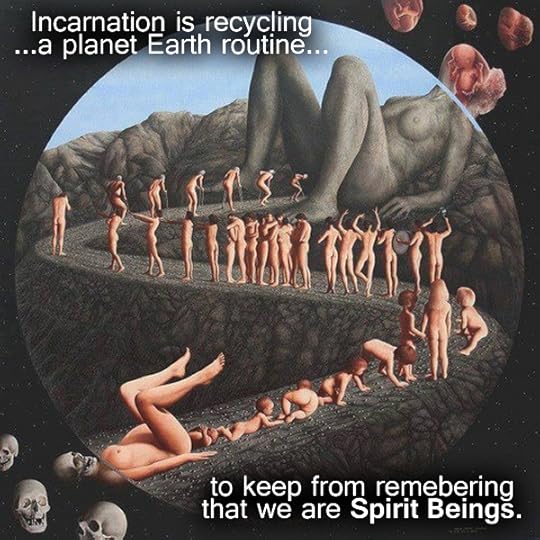Lawrence R. Spencer's Blog, page 424
November 24, 2016
RECYCLING
November 23, 2016
SWEET SLEEP
“Sweet Sleep….
Release me from my misery.
Mortality…
Reprieve from My Pain!
My Gentle Dreams…..
Save Me from Reality!
My Life is in Eternity!”
_______________
Lawrence R. Spencer. 2013.
Originally posted 2013-04-12 22:48:00. Republished by Blog Post Promoter
November 22, 2016
THE “NEW AGE” OF (the law of) “ANIMAL MAGNETISM”
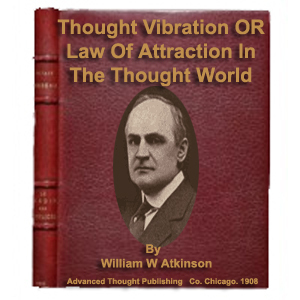 You’ve heard about the “law of attraction” and “the secret”? Maybe what you DON’T know is that these recent books and films are modern day rip-offs and watered-down spin offs from earlier books written about these subject of “animal magnetism” and the “science of being”.
You’ve heard about the “law of attraction” and “the secret”? Maybe what you DON’T know is that these recent books and films are modern day rip-offs and watered-down spin offs from earlier books written about these subject of “animal magnetism” and the “science of being”.
The most prolific writer and proponent of so-called “NEW AGE” literature in the United States was WILLIAM WALKER ATKINSON (December 5, 1862 – November 22, 1932), including the book “LAW OF ATTRACTION” published in 1906. He wrote more than 100 books on the subject of the “NEW THOUGHT” movement. Where did Atkinson get his ideas? Who influenced him? Here are article from Wikipedia that trace the origins and influences of the “NEW AGE MOVEMENT”. http://en.wikipedia.org/wiki/William_Walker_Atkinson
Atkinson learned about “animal magnetism” from Phineas Quimby: http://en.wikipedia.org/wiki/Phineas_Quimby
Phineas Quimby learned about it from Armand Marie Jacques de Chastenet, Marquis of Puységur. He was a contemporary of Benjamin Franklin, who also was appointed to a committee in France to study the subject of “animal magnetism“. http://en.wikipedia.org/wiki/Armand-Marie-Jacques_de_Chastenet,_Marquis_of_Puys%C3%A9gur
Armand learned about it from the study of “animal magnatism” or “mesmerism” or “hypnosis” from a German scientist named Franz Mesmer: http://en.wikipedia.org/wiki/Franz_Mesmer (who was a friend of Wolgang Mozart)
Frans Mesmer (May 23, 1734 – March 5, 1815) was a German physician with an interest in astronomy, who theorised that there was a natural energetic transference that occurred between all animated and inanimate objects that he called animal magnetism, sometimes later referred to as mesmerism. The theory attracted a wide following between about 1780 and 1850, and continued to have some influence until the end of the century.[2] In 1843 the Scottish physician James Braid proposed the term hypnosis for a technique derived from animal magnetism; today this is the usual meaning of mesmerism. The “science” of “animal magnetism” described in this article: http://en.wikipedia.org/wiki/Animal_magnetism
In 1766 he published a doctoral dissertation with the Latin title De planetarum influxu in corpus humanum (On the Influence of the Planets on the Human Body), which discussed the influence of the Moon and the planets on the human body and on disease.
The “New Age” was also heavily influenced by the mystic and occult teachings by a member of the European Royalty.
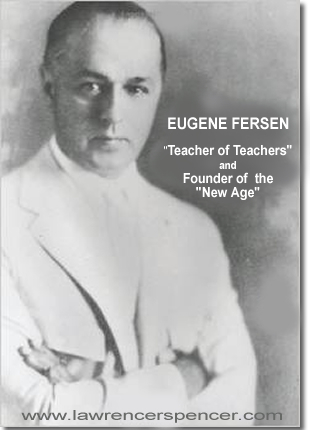 Baron Eugene Fersen, ‘The Teacher of The Teachers,’ launched in his time the greatest ‘Human Potential Movement’ that would later become the inspiration for what he called, the ‘New Age.’
Baron Eugene Fersen, ‘The Teacher of The Teachers,’ launched in his time the greatest ‘Human Potential Movement’ that would later become the inspiration for what he called, the ‘New Age.’
Baron Eugene Fersen was born November 18th, 1873 in Saint Petersburg, Russia. He began teaching by the early 1890’s and went to the great beyond on April 24th, 1956. He was the eldest son of a Grand Duchess of Russia/Poland. His mother knew before his birth that he was to be a guiding light for the people of this World; she called him Svetozar, meaning The Lightbearer.
The Baron’s mother saw to it that her son had the proper teachers and education that would assist and support the Absolute Eternal Aspects of his Soul so as to fulfill his divine destiny. Eugene’s uncle was Count Leo Tolstoy, the writer famously known for his renowned literary works War and Peace and Anna Karenina. Tolstoy was one of Mohandas Gandhi’s greatest influences and friend.
Baron Fersen came to the United States for his second lecture tour in 1904 to share his already popularized teachings and lessons known as the Science Of Being. From the late 1800s, Eugene’s teachings taught or influenced many of the great thinkers, writers, inventors and leaders of the 19th and 20th centuries. Here are a few of the highly influential people he taught:
Charles Francis Haanel (May 22, 1866 – November 27, 1949) (The Master Key System)
Elizabeth Towne (Author of The Life Power and How to Use it is shown in the opening sequence of the 2006 movie The Secret. The film presents many of the ideas that she promoted, along with those of Wallace Wattles and William Walker Atkinson.)
Wallace D. Wattles (1860–1911) (The Science Of Getting Rich and The Science Of Being Well)
Edgar Cayce (March 18, 1877 – January 3, 1945) was an American mysticwho possessed the ability to answer questions on subjects as varied as healing, reincarnation, wars, Atlantis and future events while in a trance. Cayce founded a nonprofit organization, the Association for Research and Enlightenment.
Annie Besant (Translator of the Bhagavad Gita, Theosophist, and Leader of Woman’s Rights)
Huna Max Freedom Long (great teacher of the Huna ways and teacher to the founders of the Course In Miracles, a book by Helen Schucman with portions transcribed and edited by William Thetford containing a self-study curriculum about spiritual transformation.)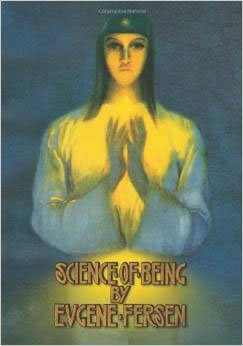
Charles Sherlock Fillmore (August 22, 1854 – July 5, 1948) founded Unity, a church within the New Thought movement, with his wife, Myrtle Page Fillmore, in 1889. He became known as an American mystic for his contributions to spiritualist interpretations of Biblicalscripture.
Samuel Langhorne Clemens (November 30, 1835 – April 21, 1910),better known by his pen name Mark Twain, was an American author and humorist. He wrote The Adventures of Tom Sawyer (1876) and its sequel, Adventures of Huckleberry Finn (1885),the latter often called “the Great American Novel.”
William Walker Atkinson (December 5, 1862 – November 22, 1932) wrote more than 100 groundbreaking “self-help” books in the last 30 years of his life. Hewas one of the three Initiates of the *Kybalion: Hermetic Philosophy is a 1908 book claiming to be the essence of the teachings of Hermes Trismegistus, published under the pseudonym of “The Three Initiates”. http://en.wikipedia.org/wiki/Kybalion
Nikola Tesla (10 July 1856 – 7 January 1943) was a Serbian-American inventor, electrical engineer, mechanical engineer, and futurist best known for his contributions to the design of the modern alternating current (AC) electricity supply system, and MANY other of the most important inventions of the 19th and 20th Century. Most important is his invention of a source of Free Electrical Energy, which has been brutally suppressed by the oil industry and banking interests for 100 years.
Manly P. Hall (March 18, 1901 – August 29, 1990) Canadian-born author and mystic. He is best known for his 1928 work The Secret Teachings of All Ages.
Rudolph Steiner (25/27 February 1861– 30 March 1925) was an Austrian philosopher, social reformer,architect, and esotericist. Steiner published philosophical works including The Philosophy of Freedom. At the beginning of the twentieth century, he founded a spiritual movement, Anthroposophy, other influences include Goethean science and Rosicrucianism. see http://en.wikipedia.org/wiki/Rudolf_Steiner
Originally posted 2014-12-24 00:54:49. Republished by Blog Post Promoter
November 21, 2016
BIODIVERSITY
“…there are millions of species [i] (Footnote) of insects. About 350,000 of these are species of beetles. [ii] (Footnote) There may be as many as 100 million species of life forms on Earth at any given time. In addition, there are many times more extinct species of life on Earth than there are living life forms. Some of these will be rediscovered in the fossil or geological records of Earth.
 The current “theory of evolution” of life forms on Earth does not consider the phenomena of biological diversity. Evolution by natural selection is science fiction. One species does not accidentally, or randomly evolve to become another species, as the Earth textbooks indicate, without manipulation of genetic material by an IS-BE.
[iii]
(Footnote)
The current “theory of evolution” of life forms on Earth does not consider the phenomena of biological diversity. Evolution by natural selection is science fiction. One species does not accidentally, or randomly evolve to become another species, as the Earth textbooks indicate, without manipulation of genetic material by an IS-BE.
[iii]
(Footnote)A simple example of IS-BE intervention is the selective breeding of a species [iv] (Footnote) on Earth. Within the past few hundred years several hundred dog breeds and hundreds of varieties of pigeons and dozens of Koi fish have been “evolved” in just a few years, beginning with only one original breed. Without active intervention by IS-BEs, biological organisms rarely change.
The development of an animal like the ‘duck-billed platypus’ required a lot of very clever engineering to combine the body of a beaver with the bill of a duck and make a mammal that lays eggs. Undoubtedly, some wealthy client placed a “special order” for it as a gift or curious amusement. I am sure the laboratory of some biotechnical company worked on it for years to make it a self-replicating life form!
The notion that the creation of any life form could have resulted from a coincidental chemical interaction moldering up from some primordial ooze is beyond absurdity!”
–excerpt from the Top Secret military transcripts published in the book ALIEN INTERVIEW
FOOTNOTES: [i] “…species…”
“In biology, a species is one of the basic units of biological classification and a taxonomic rank. A species is often defined as a group of organisms capable of interbreeding and producing fertile offspring. While in many cases this definition is adequate, more precise or differing measures are often used, such as based on similarity of DNA or morphology. Presence of specific locally-adapted traits may further subdivide species into subspecies.
The commonly used names for plant and animal taxa sometimes correspond to species: for example, “lion,” “walrus,” and “Camphor tree,” each refers to a species. In other cases common names do not: for example, “deer” refers to a family of 34 species, including Eld’s Deer, Red Deer and Wapiti (Elk). The last two species were once considered a single species, illustrating how species boundaries may change with increased scientific knowledge.
Each species is placed within a single genus. This is a hypothesis that the species is more closely related to other species within its genus than to species of other genera. All species are given a binomial name consisting of the generic name and specific name (or specific epithet). For example, Pinus palustris (commonly known as the Longleaf Pine).
A usable definition of the word “species” and reliable methods of identifying particular species are essential for stating and testing biological theories and for measuring biodiversity. Traditionally, multiple examples of a proposed species must be studied for unifying characters before it can be regarded as a species. Extinct species known only from fossils are generally difficult to give precise taxonomic rankings to. A species which has been described scientifically can be referred to by its binomial names.
Nevertheless, as Charles Darwin remarked,
‘I look at the term species as one arbitrarily given for the sake of convenience to a set of individuals closely resembling each other …. it does not essentially differ from the term variety, which is given to less distinct and more fluctuating forms. The term variety, again in comparison with mere individual difference, is also applied arbitrarily, and for mere convenience sake.’
Because of the difficulties with both defining and tallying the total numbers of different species in the world, it is estimated that there are anywhere between 2 million and 100 million different species.”
— Reference: Wikipedia.org
[ii] “…species of beetle…”
“Beetles are a group of insects which have the largest number of species. They are placed in the order Coleoptera, which means “sheathed wing” and contains more described species than in any other order in the animal kingdom, constituting about twenty-five percent of all known life-forms. Forty percent of all described insect species are beetles (about 350,000 species), and new species are frequently discovered. Estimates put the total number of species, described and undescribed, at between 5 and 8 million.
Beetles can be found in almost all habitats, but are not known to occur in the sea or in the polar regions. They interact with their ecosystems in several ways. They often feed on plants and fungi, break down animal and plant debris, and eat other invertebrates. Some species are prey of various animals including birds and mammals. Certain species are agricultural pests, such as the Colorado potato beetle Leptinotarsa decemlineata, the boll weevil Anthonomus grandis, the red flour beetle Tribolium castaneum, and the mungbean or cowpea beetle Callosobruchus maculatus, while other species of beetles are important controls of agricultural pests. For example, coccinellidae (“ladybirds” or “ladybugs”) consume aphids, scale insects, thrips, and other plant-sucking insects that damage crops.”
— Reference: Wikipedia.org
[iii] “ One species does not evolve to become another species, as the Earth textbooks indicate, without the intervention and manipulation of genetic material by an IS-BE.”
“Genetic engineering , recombinant DNA technology, genetic modification / manipulation (GM) and gene splicing are terms applied to the direct manipulation of an organism’s genes. Genetic engineering is not to be confused with traditional breeding where the organism’s genes are manipulated indirectly. Genetic engineering uses the techniques of molecular cloning and transformation. Genetic engineering endeavors have found some success in improving crop technology, the manufacture of synthetic human insulin through the use of modified bacteria, the manufacture of erythropoietin in Chinese hamster ovary cells, and the production of new types of experimental mice such as the oncomouse (cancer mouse) for research.
Since a protein sequence is specified by a segment of DNA called a gene, novel versions of that protein can be produced by changing the DNA sequence of the gene. The companies that own the modified genome are able to patent it. In the case of basic crops, the companies gain control of foodstuffs, controlling food production on a large scale and reducing agrobidiversity to a few varieties. The only apparent interest in promoting this tecnology appears to be purely economic, despite the claims of seed companies such as Monsanto and Novartis to solve the world food scarcity. It is now popularly understood that it is not the lack of food on a wholewide scale that is the main problem, but its distribution, aggravated by prohibitive tariffs by rich nations. Genetically modified crops do not reduce hunger. The majority of genetically crops are destined for animal food to meet the high demand for meat in developed countries. No genetic modification have yet to serve the needs of mankind despite all the promises in this direction.
However, even with regard to this technology’s great potential, some people have raised concerns about the introduction of genetically engineered plants and animals into the environment and the potential dangers of human consumption of GM foods. They say that these organisms have the potential to spread their modified genes into native populations thereby disrupting natural ecosystems. This has already happened.”
— Reference: Wikipedia.org
[iv] “… genetic manipulation of a species…”
“How much genetic variation is there? Historical debate: Classical school held that there was very little genetic variation, most individuals were homozygous for a “wild-type” allele. Rare heterozygous loci due to recurrent mutation; natural selection purges populations of their “load” of mutations. Balance school held that many loci will be heterozygous in natural populations and heterozygotes maintained by “balancing selection” (heterozygote advantage). Selection thus plays a role in maintaining variation.
How do we measure variation? To show that there is a genetic basis to a continuously varying character one can study 1) resemblance among relatives: look at the offspring of individuals from parents in different parts of the distribution; can estimate heritability (more later). 2) artificial selection: pigeons and dogs show that there is variation present; does not tell how much variation.”
— Reference: http://biomed.brown.edu/Courses/BIO48...
Originally posted 2013-09-29 21:08:12. Republished by Blog Post Promoter
November 20, 2016
HOW DO YOU KNOW YOU’RE MAD?
 Excerpt from the book SHERLOCK HOLMES: MY LIFE
Excerpt from the book SHERLOCK HOLMES: MY LIFE 
“”I do not ask you, or anyone, to believe anything whatsoever. Belief is a matter of personal opinion or conviction which cannot be shared by anyone else, accept to the degree that they share a similar opinion. Some men believe that the world was created by an omnipotent, invisible being in seven days. People in some aboriginal tribes believe that the world is supported on the back of an enormous elephant which stands upon the shell of a colossal tortoise”, I said, finally arriving at the pages I was looking for in the manuscript.
“As for myself, I believe that what is true for you is true for you, although no other person may agree upon your belief. Regardless, a truth for you, may not be true for others. Is that not a fundamentally sound assumption?”, I asked.
 “I suppose you are right Mr. Holmes. It is difficult, if not impossible, to stay apace of your ability to remain logical in the face of a situation which is so absurdly enigmatic. You are proposing that the philosophical paradigm of reality should be considered of equal importance with fiction. How can you ever solve a criminal case, your occupation, if every piece of hard evidence could be a contrivance of imagination on the part of the investigator or of the criminal?”, said Mr. Dodgson.
“I suppose you are right Mr. Holmes. It is difficult, if not impossible, to stay apace of your ability to remain logical in the face of a situation which is so absurdly enigmatic. You are proposing that the philosophical paradigm of reality should be considered of equal importance with fiction. How can you ever solve a criminal case, your occupation, if every piece of hard evidence could be a contrivance of imagination on the part of the investigator or of the criminal?”, said Mr. Dodgson.
“Quite the contrary”, I said. “But rather than keeping to my methods alone, let me ask you what meaning you attribute to the following passage in your book”, I said, turning to the page which described in the encounter between Alice and the Cheshire Cat.
“Let me read your own words to you.”
“…she was a little startled by seeing the Cheshire Cat sitting on a bough of a tree a few yards off.
The Cat only grinned when it saw Alice. It looked good-natured, she
thought: still it had VERY long claws and a great many teeth, so she
felt that it ought to be treated with respect.
‘Cheshire Puss,’ she began, rather timidly, as she did not at all know
whether it would like the name: however, it only grinned a little wider.
‘Come, it’s pleased so far,’ thought Alice, and she went on. ‘Would you
tell me, please, which way I ought to go from here?’
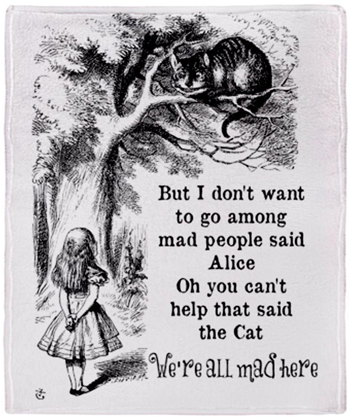 ‘That depends a good deal on where you want to get to,’ said the Cat.
‘That depends a good deal on where you want to get to,’ said the Cat.
‘I don’t much care where–‘ said Alice.
‘Then it doesn’t matter which way you go,’ said the Cat.
‘–so long as I get SOMEWHERE,’ Alice added as an explanation.
‘Oh, you’re sure to do that,’ said the Cat, ‘if you only walk long
enough.’
Alice felt that this could not be denied, so she tried another question.
‘What sort of people live about here?’
‘In THAT direction,’ the Cat said, waving its right paw round, ‘lives
a Hatter: and in THAT direction,’ waving the other paw, ‘lives a March
Hare. Visit either you like: they’re both mad.’
‘But I don’t want to go among mad people,’ Alice remarked.
‘Oh, you can’t help that,’ said the Cat: ‘we’re all mad here. I’m mad.
You’re mad.’
‘How do you know I’m mad?’ said Alice.
‘You must be,’ said the Cat, ‘or you wouldn’t have come here.’
Alice didn’t think that proved it at all; however, she went on ‘And how
do you know that you’re mad?'”
“So, Mr. Dodgson, let me pose the same question to you that young Alice asked of the chimerical cat in your own story: how do you know whether you are mad or not mad? How would you satisfy yourself that I am not mad? How do we know that everyone is mad or not mad?”, I said, rising from my chair to place the manuscript upon the sideboard.
I refilled my pipe once again, in anticipation of the protracted debate that was sure to follow on the heels of these profoundly, absurd, yet existential queries and arguments.
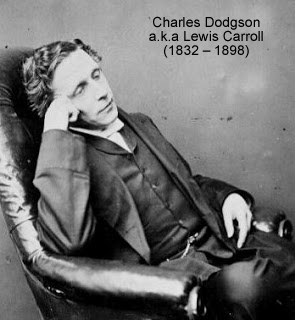 Mr. Dodgson did not seem the least bit nonplused by my insinuation regarding his sanity, or the sanity of all. Rather, he thanked us very cordially for our hospitality, rose from his chair and reached the door to exit the apartment. As he reached the door he turned back to me.
Mr. Dodgson did not seem the least bit nonplused by my insinuation regarding his sanity, or the sanity of all. Rather, he thanked us very cordially for our hospitality, rose from his chair and reached the door to exit the apartment. As he reached the door he turned back to me.
“Mr. Holmes, I will leave the resolution of this mystery entirely in your very capable hands. If anyone were able to solve the questions you pose to me, I assure you that I am not that man. Neither are any of the mentors whom I have studied, including Sir Isaac himself. I trust that you will be kind enough to inform me of your eventual success, if such is possible. Good day to you, gentlemen”.
With that, he departed, clomped down the stairs. Through the window we saw him walk briskly away through a light drizzle of rain in the direction of the train station.”
Originally posted 2015-09-30 23:19:32. Republished by Blog Post Promoter
November 19, 2016
ALONE TOGETHER
SPACE IS NOTHING.
BEINGS ARE SEPARATED BY NOTHING.
BEINGS ARE ALONE TOGETHER.
– Loud Zoo –
— from the forthcoming book THE TAO TE TERRA by Lawrence R. Spencer —
LOVE LOST
November 18, 2016
PREDATORS AND PREY
 Humans beings are the same as all creatures on Earth.: most humans are content to follow the herd and struggle to survive. A relative few are predators or parasites who feed upon the herd. These few are the bankers, priests and politicians who cannot survive without the herd. They disguise themselves as “leaders” of the herd. As long as “the herd” believes the that predators are “leaders” they will be killed and eaten. This is “life” on Earth.
Humans beings are the same as all creatures on Earth.: most humans are content to follow the herd and struggle to survive. A relative few are predators or parasites who feed upon the herd. These few are the bankers, priests and politicians who cannot survive without the herd. They disguise themselves as “leaders” of the herd. As long as “the herd” believes the that predators are “leaders” they will be killed and eaten. This is “life” on Earth.
PLAYERS ON A STAGE
I PLAY A ROLE IN THE THEATER OF LIFE.
A HUNDRED THOUSAND ENCORES UPON THIS STAGE.
I’VE PORTRAYED THE PART OF A MAN:
HARD, THRUSTING, BRUTAL, AND DOMINEERING.
I’VE BEEN CAST IN THE ROLE OF WOMEN:
AESTHETIC, SOFT, SUBMISSIVE, SECRET, AND PERSEVERING.
I CHERISH DRAMA. COMIC ABSURDITY.
TRAGIC PATHOS AND MYSTERY.
I WEAR A BODY LIKE A MASK.
I KNOW WHICH ROLE I’M PLAYING WHEN I PLAY.
THE SCENERY CHANGES. THE STAGE REMAINS.
THE MASKS MAY CHANGE:
THE PLAYERS STAY THE SAME.
— LAWRENCE R. SPENCER. 2012. —
Originally posted 2012-09-04 01:19:55. Republished by Blog Post Promoter
November 16, 2016
TRANSFORMED
Carl Gustav Jung ( 26 July 1875 – 6 June 1961), was a Swiss psychiatrist and psychotherapist who founded analytical psychology. Jung proposed and developed the concepts of extraversion and introversion; archetypes, and the collective unconscious. His work has been influential in psychiatry and in the study of religion, philosophy, archeology, anthropology, literature, and related fields. The central concept of analytical psychology is individuation – the psychological process of integrating the opposites, including the conscious with the unconscious, while still maintaining their relative autonomy. Jung considered individuation to be the central process of human development.
Jung created some of the best known psychological concepts including the archetype, the collective unconscious, the complex, and synchronicity. Jung saw the human psyche as “by nature religious” and made this religiousness the focus of his explorations. Jung’s work on himself and his patients convinced him that life has a spiritual purpose beyond material goals. Our main task, he believed, is to discover and fulfill our deep innate potential. Based on his study of Christianity, Hinduism, Buddhism, Gnosticism, Taoism, and other traditions, Jung believed that this journey of transformation, which he called individuation, is at the mystical heart of all religions. It is a journey to meet the self and at the same time to meet the Divine. Jung’s pantheism may have led him to believe that spiritual experience was essential to our well-being, as he specifically identifies individual human life with the universe as a whole.
Jung recommended spirituality as a cure for alcoholism and he is considered to have had an indirect role in establishing Alcoholics Anonymous. Jung proposed that art can be used to alleviate or contain feelings of trauma, fear, or anxiety and also to repair, restore and heal. In his work with patients and in his own personal explorations, Jung wrote that art expression and images found in dreams could be helpful in recovering from trauma and emotional distress. He often drew, painted, or made objects and constructions at times of emotional distress, which he recognized as more than recreational.
Jung’s interest in philosophy and the occult led many to view Jung as a mystic, although Jung’s ambition was to be seen as a man of science. His influence on popular psychology, the “psychologization of religion”, spirituality and the New Age movement has been immense.
Originally posted 2013-10-01 14:56:36. Republished by Blog Post Promoter

